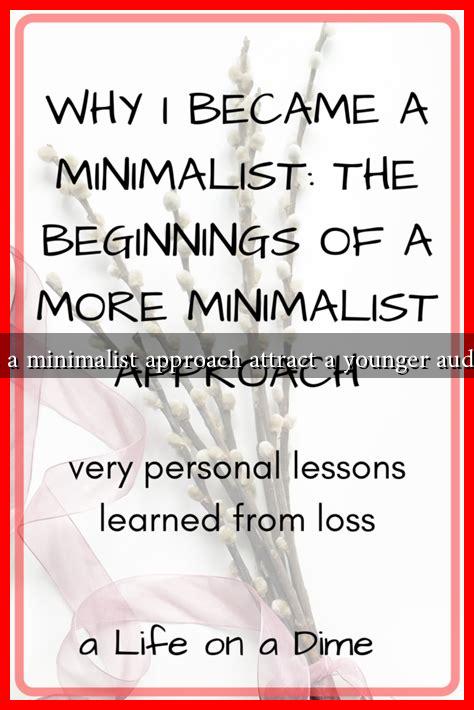-
Table of Contents
Does a Minimalist Approach Attract a Younger Audience?
In recent years, minimalism has emerged as a significant lifestyle trend, particularly among younger generations. This article explores whether a minimalist approach can effectively attract a younger audience, examining the psychological, social, and economic factors that contribute to this phenomenon.
The Rise of Minimalism
Minimalism is more than just a design aesthetic; it is a lifestyle choice that emphasizes simplicity, intentionality, and the reduction of excess. The minimalist movement has gained traction in various domains, including fashion, interior design, and even digital spaces. According to a survey by Statista, 60% of millennials and Gen Z respondents expressed interest in adopting a minimalist lifestyle.
Psychological Appeal of Minimalism
One of the primary reasons minimalism resonates with younger audiences is its psychological appeal. In a world saturated with information and consumer goods, minimalism offers a sense of clarity and peace. Here are some psychological benefits that attract younger individuals:
- Reduced Stress: A clutter-free environment can lead to lower stress levels, allowing individuals to focus on what truly matters.
- Enhanced Creativity: Minimalism encourages creativity by removing distractions, enabling individuals to think more freely.
- Mindfulness: The minimalist lifestyle promotes mindfulness, encouraging individuals to appreciate experiences over material possessions.
Social Influences and Trends
Social media platforms like Instagram and TikTok have played a crucial role in popularizing minimalism among younger audiences. Influencers and content creators often showcase minimalist lifestyles, making them aspirational. The hashtag #minimalism has garnered millions of posts, illustrating the widespread appeal of this lifestyle.
Moreover, the rise of sustainability and ethical consumerism has further fueled the minimalist trend. Younger generations are increasingly aware of the environmental impact of consumerism and are drawn to brands that promote sustainable practices. For instance, companies like Everlane and Muji emphasize simplicity and sustainability in their product offerings, attracting a loyal customer base among younger consumers.
Economic Factors Driving Minimalism
The economic landscape has also contributed to the appeal of minimalism. With rising student debt and housing costs, many young people are seeking ways to simplify their lives financially. Here are some economic factors that make minimalism attractive:
- Affordability: Minimalism encourages individuals to invest in fewer, high-quality items rather than accumulating cheap, disposable goods.
- Financial Freedom: By adopting a minimalist lifestyle, individuals can save money and reduce financial stress, allowing for greater freedom in their choices.
- Shared Economy: The rise of the sharing economy (e.g., Airbnb, Uber) aligns with minimalist values, promoting access over ownership.
Case Studies: Brands Embracing Minimalism
Several brands have successfully adopted a minimalist approach to attract younger audiences. Here are a few notable examples:
- Apple: Known for its sleek design and user-friendly interfaces, Apple has built a brand around minimalism, appealing to tech-savvy younger consumers.
- IKEA: The Swedish furniture giant emphasizes simplicity and functionality in its products, making it a favorite among young homeowners and renters.
- Everlane: This clothing brand focuses on transparency and ethical production, resonating with younger consumers who value sustainability.
Conclusion: The Future of Minimalism and Youth Engagement
In conclusion, a minimalist approach does indeed attract a younger audience, driven by psychological benefits, social influences, and economic factors. As younger generations continue to prioritize experiences over possessions and seek sustainable living options, brands that embrace minimalism are likely to thrive. The trend is not just a passing fad; it represents a fundamental shift in how younger consumers view their relationship with material goods and the world around them.
As we move forward, it will be interesting to see how minimalism evolves and how brands adapt to meet the needs of this increasingly conscious consumer base. Embracing minimalism may not only be a strategy for attracting younger audiences but also a pathway to a more sustainable and fulfilling lifestyle.


